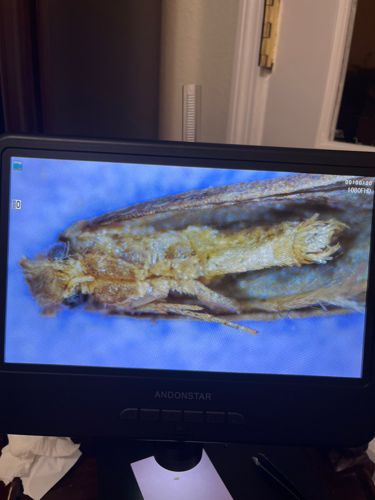Indianmeal Moth
Scientific Name: Plodia interpunctella
Order & Family: Lepidoptera (Moths and Butterflies), Pyralidae (Snout Moths)
Size: Adult moths have a wingspan of 1/2 to 3/4 inch (12-20 mm). Larvae are typically up to 1/2 inch (12 mm) long.

Natural Habitat
Commonly found in homes, grocery stores, food processing plants, and warehouses where stored food products are present. They infest pantries, kitchens, and other areas where dried foods are kept.
Diet & Feeding
The larvae are voracious feeders on a wide variety of dried food products, including grains (corn, wheat, rice), flour, cereal, pasta, dried fruits, nuts, seeds, pet food, birdseed, chocolate, and spices. Adults do not feed.
Behavior Patterns
Adult Indianmeal moths are poor flyers and tend to fly in a zigzag pattern, often seen around food sources. They are nocturnal. Females lay eggs directly on or near food sources. Larvae spin silken webs as they feed, which can mat food particles together and contaminate food. Larvae often leave the food source to pupate in crevices or in a secluded spot, sometimes seen crawling up walls or across ceilings.
Risks & Benefits
Potential risks include significant damage and contamination of stored food products, leading to financial losses and potential health concerns if infested food is consumed (though generally not directly harmful, just unappetizing). They pose a nuisance in homes and commercial settings. There are no notable benefits to humans or the ecosystem, as they are primarily considered pests.
Identified on: 9/15/2025